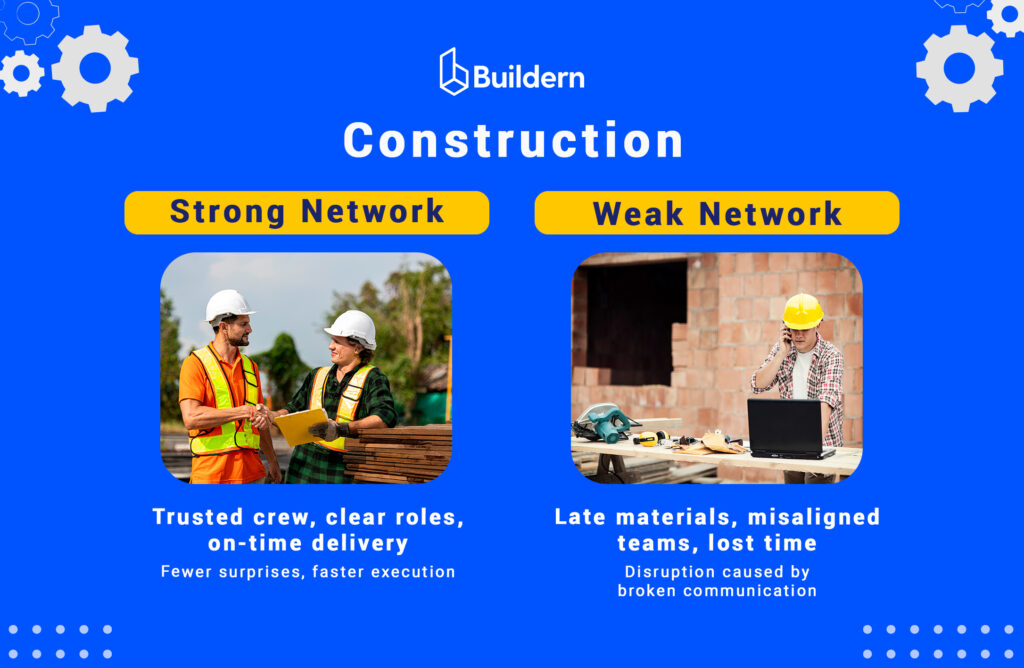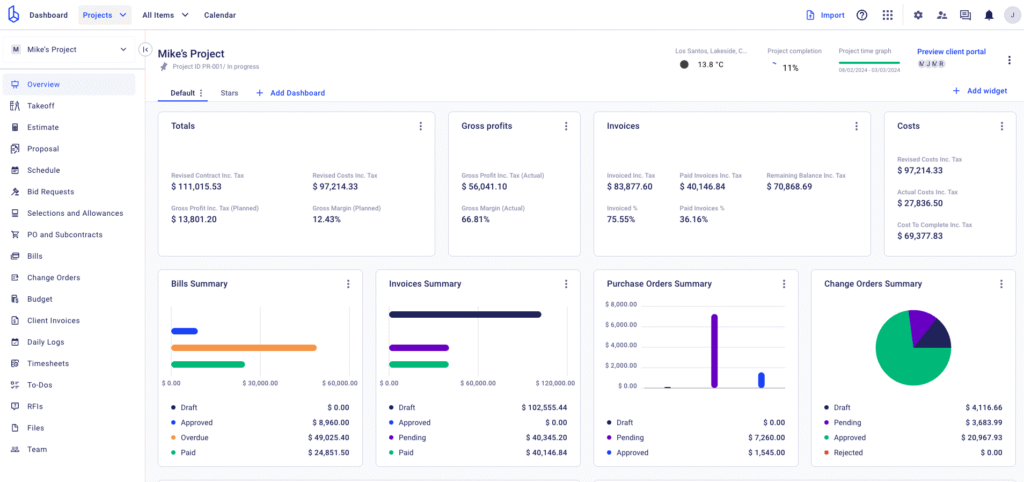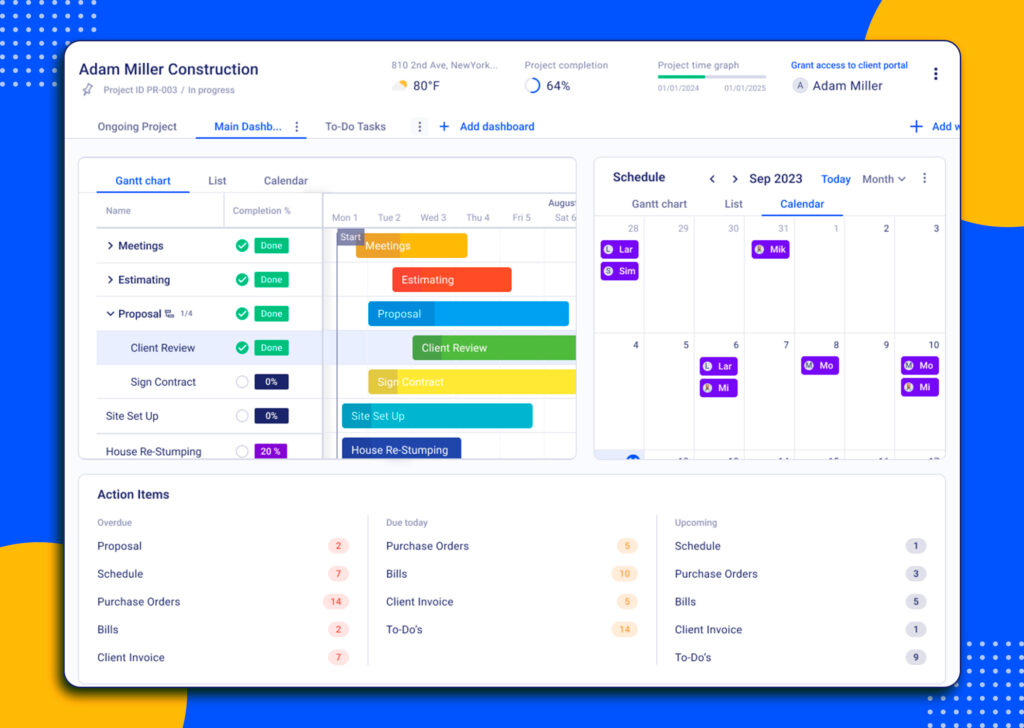Construction Networking: Building Relationships That Make Projects Easier

Most builders learn this late; you can have the right tools, the right plans, and even the right weather, but without the right people, the job gets harder than it needs to be.
Construction networking isn’t about handing out cards or making small talk at trade shows. It’s about forming relationships you can count on when things don’t go according to plan, and the plans never fully do!
A single dependable contact can prevent a shipment delay from turning into a shutdown. Similarly, poor communication between trades can cost weeks.
The difference between a project that moves forward and one that derails often comes down to who is involved and how well they’ve worked together.
Here’s what effective construction networking looks like, and how to manage construction collaboration, build relationships that make the job easier and more profitable.

Table of Contents
- The Purpose of Construction Networking
- The Measurable Impact of Strong Industry Relationships
- Where Relationships Take Shape in Construction
- Turning Connections Into Long-Term Business Strength
- Messaging That Keeps Working Relationships from Falling Apart
- How Buildern Helps Strengthen Construction Networks
- Wrapping Up
The Purpose of Construction Networking
At its core, construction networking refers to building and maintaining long-term connections with industry professionals such as general contractors, architects, engineers, suppliers, project managers, and more. But this process isn’t about volume; the thing that matters is trust.
A well-developed network allows teams to:
- Locate dependable partners fast
- Collaborate with professionals who already understand specific standards
- Reduce the need to reinvent project processes from scratch
It also supports faster navigation through region-specific permitting requirements and fosters smarter financial and operational decisions by tapping into shared knowledge.
💡This isn’t theory; it is the reality on project sites of every size, from custom home builds to complex commercial developments.

The Measurable Impact of Strong Industry Relationships
Experienced professionals often recall specific moments where a solid relationship changed the trajectory of a project. In some cases, it’s the ability to bring in a trusted subcontractor on short notice. In others, it’s the confidence to delegate tasks without overexplaining, because past collaborations have already proved what to expect.
Coordination Improves with Familiarity
Established working relationships remove unnecessary delays caused by confusion over responsibilities, expectations, or communication channels. Teams already understand how to work together, allowing for faster project starts and fewer missed details.
Critical Information Becomes More Accessible
A well-connected builder rarely operates in the dark. Material pricing trends, labor availability, and supply chain updates are often communicated directly rather than confusedly.
Delays Become Less Damaging
Reliable partnerships offer built-in support systems. When something goes off track, trusted contacts often help troubleshoot and recover quickly.
Problem-Solving Happens Faster
Teams with a history of collaboration tend to focus on resolution instead of blame when challenges arise. That shared approach to problem-solving can keep a project from stalling.
Future Opportunities Multiply
Strong networks often lead to more consistent work. A subcontractor who performs well on one project is more likely to be referred to others. Over time, reputation becomes a growth engine.
Where Relationships Take Shape in Construction
Networking in construction isn’t limited to formal introductions or business development calls. The most valuable connections often form practical settings where performance, communication, and reliability are on full display.
In the same way, strong industry relationships rarely happen by accident. They are built intentionally in the right environments where professionals align not just on deliverables but on standards, accountability, and how problems get solved.
Below are the most common (and effective) places where these relationships begin and where they’re tested.
Construction Networking Events
Industry conferences, expos, and trade shows remain key environments for meeting decision-makers and building strategic partnerships. These construction networking events gather general contractors, project managers, suppliers, and consultants under one roof, offering insight into emerging trends, local regulations, and technology updates.

Notable examples include CONEXPO-CON/AGG and the NAHB International Builders’ Show. Beyond product demos, these events often include breakout discussions, networking lounges, and local market updates that promote stronger industry alignment.
Construction Networking Groups
These groups offer more focused, consistent relationship-building in both regional and national contexts. Such groups are often structured as member-based organizations or coalitions focused on advocacy, workforce development, and education.
National associations such as AGC – Associated General Contractors of America and ABC – Associated Builders and Contractors provide ongoing opportunities to connect with like-minded professionals through events, peer forums, policy briefings, and certifications. Many local chapters host workshops or regional networking nights designed specifically to encourage high-value collaboration.

Job Sites and Ongoing Collaborations
The job site itself remains one of the most authentic spaces for construction networking. Day-to-day interaction under pressure quickly reveals whether a team is responsive, solution-oriented, and consistent. The best referrals often come from those who’ve experienced directly how someone handles unexpected issues, compresses timelines, or last-minute scope shifts.
Surely, consistent performance builds credibility. Even a single well-executed project can lead to long-term working relationships and direct invitations to future bids or partnerships.
Digital Workspaces and Collaboration Tools
While on-site interactions build rapport, digital infrastructure keeps relationships functional across multiple jobs and phases. Centralized tools that support schedule transparency, task delegation, file access, and change tracking play a critical role in maintaining drive, especially when teams are distributed across locations.
Similarly, resources from construction-focused standards organizations such as the Construction Specifications Institute (CSI) or the National Institute of Building Sciences reinforce the importance of structured communication and coordination in complex builds. When these systems are in place, collaboration becomes more efficient and less tend to miscommunication.
Buildern supports this by offering a shared digital workspace where teams can manage tasks, schedules, and project updates with clarity and consistency.

Turning Connections Into Long-Term Business Strength
In construction, long-lasting relationships are built through consistent performance and clear communication. Trust grows one project at a time, with every schedule met, scope clarified, and issue resolved. Similarly, the longer the reliability stacks up, the surer partners are of the job to be done.
Over time, those dependable collaborations lead to ongoing work and referrals. Strong relationships become a part of the foundation that clients and colleagues rely on.

Preparation and Professionalism Build Trust
Strong relationships often start before the job site opens. Showing up prepared for project planning with reviews, accurate estimates, and specific questions demonstrates professionalism. Early attention to detail shows respect for others’ time and priorities. So, this reputation eventually will lead to smoother bidding, clearer meetings, and fewer last-minute surprises.
Clarity Is What Keeps Relationships Steady
Everyone knows that projects rarely run perfectly. What breaks relationships isn’t the issue itself. Miscommunication plays a central role in this. When scope, timelines, and limitations are communicated, only then do teams adapt even more easily.
Strong relationships rely on clear communication, especially when things go off track. A few extra minutes up front can save days later in the build.
Support Is What Makes People Want to Work Together Again
The best relationships come from professionals who do more than the minimum. A quick referral, a heads-up on local code changes, or sharing a tip that helped on a similar job will do good. These small acts stick, especially when nothing was asked in return. Lastly, consistency and helpfulness carry more weight than big talk.
Documentation Isn’t Just Paperwork
Trust is easier to maintain when everything is tracked and easy to access. Teams waste hours looking through files, clarifying approvals, or resolving disputes that could’ve been avoided with proper records. Organized documentation can protect the project and the relationship behind it. It shows accountability and reduces unnecessary trade-offs.
Messaging That Keeps Working Relationships from Falling Apart
Work doesn’t slow down because people stop caring. It slows down because the right message doesn’t reach the right person at the right time. A simple delay in communication can push crews into standby mode, cause scope confusion, or stall an entire task waiting on clarification.
When updates rely on emails, texts, and apps that aren’t connected to work, conversations get missed or repeated. Subcontractors wait. Project managers follow up more than they should. Field teams guess instead of confirming.
To avoid this, a clear, timely message can resolve issues before they become problems. It can keep everyone aligned without needing long back-and-forth or constant check-ins.
Buildern’s messaging is built into the same space teams already use to manage tasks, schedules, RFIs, and files. Conversations stay tied to the work, not floating in a separate tool. A subcontractor can ask a question within the task they’re assigned. A site photo can be sent and responded to in minutes. Everyone stays informed, and no one has to dig through inboxes or repeat themselves.

How Buildern Helps Strengthen Construction Networking
The relationships that keep construction projects running aren’t built on software. They’re built on trust, consistency, and clear communication. But the right tools can make those relationships easier to manage, especially across complex teams and fast-moving timelines.
If construction professionals are given a shared space to plan, they coordinate and communicate without switching between disconnected systems. Tasks, schedules, files, change orders, messages, RFIs, and approvals all live in one place. Everyone sees what’s happening, what’s expected, and what’s next.

Collaboration becomes simpler when subcontractors can access only what’s relevant to them, which is a critical feature of most construction management for small businesses.
In the same way, when documents are updated, approvals logged, and schedules adjusted in real time, there’s less room for confusion. This visibility is exactly what construction teams need to create a construction schedule that holds up under pressure.
Wrapping Up
Relationships are the real infrastructure. Even if construction is a business of logistics, labor, materials, and codes, underneath it all, it’s built on relationships. The teams that show up, communicate clearly, and deliver consistently are always called back. The networks formed on job sites, during challenging builds, and through honest work often outlast individual projects and carry the business forward.
In the end, networking in construction isn’t a side task. It’s foundational. The time to build those relationships is before the pressure starts, and not during it!



